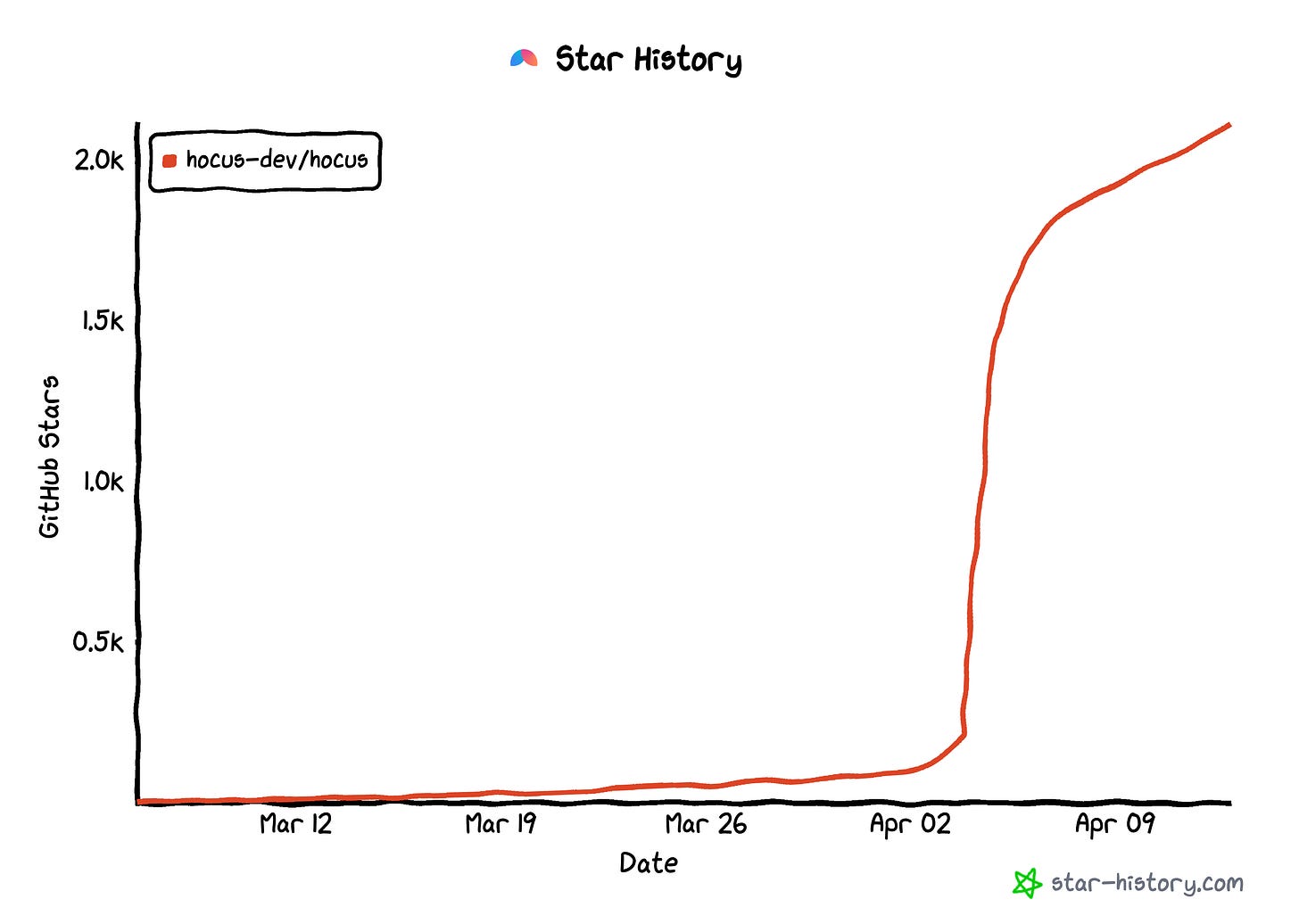DevTools Brew #6: Fundraising Guide for Open-Source founders, What we learned about hiring from our first five employees, Interview with Supabase CEO...
Welcome to the DevTools Brew #6!
My name is Morgan Perry, co-founder of Qovery, and this is DevTools Brew newsletter, a weekly roundup of the latest trends and insights in the infrastructure and devtools industry.
To receive it in your inbox each week, subscribe here!
In this Issue #6:
💸 Latest Devtools Funding Rounds
📈 A Fundraising Guide for Open-Source founders
💻 What we learned about hiring from our first five employees (CEO of Posthog)
⭐ Star History Weekly Pick
🎙️ Interview with Supabase CEO, the Open Source Firebase Alternative
⚡ Quick Link
I hope you will enjoy this sneak peek.
Let's dive in!
💸 Latest Funding Rounds
Otterize, announced a $11.5M in a Seed funding round to help developers securely connect software services
Cerbos, a company building an open source user-permission software platform, announced a fresh $7.5M in seed funding
DBeaver, an open source database admin tool, announced $6M seed investment to build on growing popularity
Cato, a low cost, carbon free bare metal plaftorm, raised $8,7M in a Series Undisclosed
📈 A Fundraising Guide for Open-Source Founders
I've heard you loud and clear :)
Today's digest is all about the topic you've been asking for the most!
Since "Raising a Series A for a DevTools Startup" and "Making Money from Open Source" were the most popular topics in my previous digests, I decided to gather the best resources on this topic.
Let’s delve into a two-part series about open-source fundraising:
So How Many Stars Is Enough? A Data-Driven Guide to Fundraising as an Open-Source Founder
Can My Open Source Company Raise Series A?
Let's take a look at the first overview.
1. Overview - So How Many Stars Is Enough? A Data-Driven Guide to Fundraising as an Open-Source Founder?

Open source companies at the earliest stages are viewed like social networks. Building community momentum is the most critical factor for the success of an open source project, and revenue is not necessary if you have the other criteria accounted for.
Many investors will say revenue is one of the most important factors to consider when evaluating an open source company, but in reality, at least 49 of the 69 seed companies in the dataset had no revenue at the time of their financings.
GitHub stars are a controversial open source metric, but VCs do pay some attention to it. The median value of stars for the 54 seed companies in the dataset that had released their open source project at the time of their financing was 2,850. The median star value for the 48 Series A companies was 4,980.
Other factors to evaluate open source investment opportunities include contributors, Slack/Discord, downloads/user growth, quality of design partners/customers and use cases, market and product, and team and storytelling.
Data is imperfect and incomplete, and some stats are from fundraising pitches, while others are from when their fundraising announcements occurred. Thus, the numbers presented are upper bounds of traction as the financings occurred prior to the announcements.
Overall, community momentum is more important than revenue, and stars can pique the interest of the investor but won't land the role. Other factors should be considered when evaluating open source investment opportunities.
—> While this is just a quick overview, I highly encourage you to check out the full article published by Jordan Segall. It's packed with loads of fascinating data and examples that are sure to be of interest to you :)
Let’s continue the open-source fundraising series with the part 2/
2. Overview - Can My Open Source Company Raise Series A?

Historically, open-source companies could raise Series A and even Series B without a commercial product or strategy, but this has changed.
67% of investors say their view on ARR at Series A has changed over the past few years. At least $100K ARR is required, and while 50% of investors say they're looking for $100K - $500K ARR, more investors may move into the $500K+ ARR range if the macro environment doesn't improve.
The top 5 open source metrics investors care about are:
Users Running the Project in Production (59% of investors want to see 10-50 production users by Series A, while 29% want to see 50-100).
Users from Mid-Market & Enterprise Companies (39% of investors want to see usage by 5-10 mid-market and enterprise users by Series A, while 33% want to see 10-20).
Users in Slack or Discord (67% of investors expect 500-1K members in a project's Slack or Discord by Series A).
Number of GitHub Issues (71% of investors look for 100-300 GitHub issues by Series A).
Number of GitHub Stars (60% of investors expect 3K stars or more at this stage).
Other metrics investors look for include usage and retention of users, unique monthly contributors, diversity of companies using the project, conversion ratios, annual contract value, and NPS of production users.
Remember that metrics alone are only part of the story, and your project's market and the team's expertise are also crucial factors that investors consider when deciding whether to invest in your company.
—> To go further, I invite you to read the full article from by Cowboy Ventures
💻 What we learned about hiring from our first five employees - CEO of PostHog
James Hawkins, CEO and co-founder of PostHog, talked about the first five hires PostHog ever made, how he made them, and why. This is the story behind each hire, and the lessons PostHog team learned along the way.
—> Read the full article here
⭐ Star History Weekly Pick
The Star History Weekly Pick is:
Hocus, “a self-hosted alternative to Gitpod and Github Codespaces”
⭐️ 2.2k stars reached
🎙️ Building Supabase, the Open Source Firebase Alternative
Paul Copplestone is Co-Founder & CEO of Supabase, the open source Backend-as-a-Service company that provides storage, authentication, edge functions, and a Postgres database to users.
Supabase's project, also called Supabase, has 36K stars on GitHub and is positioned as the "open source Firebase alternative".
Supabase has raised $116M from investors, including Coatue, Felicis, and YC.
In this episode, Superbase CEO will discuss positioning as an open source alternative to "x", the benefits of going through YC as an open source company, how to judge open source momentum, learnings for other early open source founders, and more!
Full episode here
⚡ Quick Link
How to be a -10x Engineer
+10x engineers may be mythical, but -10x engineers exist.
To become a -10x engineer, simply waste 400 engineering hours per week. Combine the following strategies […]
—> Read the full article here
It’s already over! If you have any comments or feedback, Let’s talk about this together on LinkedIn or on Twitter.
Thanks for reading,
Morgan
Please share DevTools Brew with your friends, and subscribe





